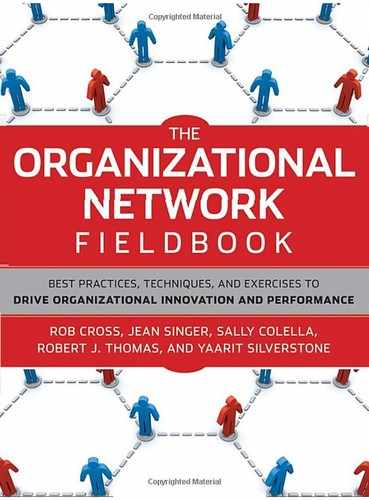Chapter 13. IMPROVING DECISION MAKING THROUGH NETWORK RECONSTRUCTION
Rob Cross and Robert J. Thomas
It comes as a surprise to many executives that improving collaboration in their organizations does not necessarily mean increasing it. In fact, too much connectivity can be as problematic as too little. In organizations that have experienced rapid growth, such as through mergers and acquisitions, and in those whose processes and workflows have not kept pace with the changes, employees at all levels may not know how to get things done. So they reach out to others, in particular to those above them in the hierarchy, for advice, clarification, approvals, and decisions. All that connectivity is costly and inefficient. Sometimes the solution to network problems is to decrease and streamline collaborative exchanges.
Consider the situation at Cedarwood Pharmaceuticals (the company's and CEO's names have been disguised). In just 10 years, the company had grown from a 5-person, single-product start-up into a major, multidivisional player that developed and sold a wide range of drugs and boasted a 3,000-strong workforce. Proud of Cedarwood's success and culture—which had long emphasized collaboration, informality, and entrepreneurialism—CEO James Estes nevertheless sensed trouble brewing.
He knew that by most measures—financial performance, new-product pipeline, onboarding of talent, operational expenses—Cedarwood was doing fine. But the latest annual workforce survey had revealed growing frustration among employees with the company's decision-making processes. Specifically, employees at numerous levels complained about how long it took to make decisions and get things done. They also expressed concern that their previously consensual, empowering culture had given way to a bureaucratic one. Interestingly, satisfaction levels among the executive ranks remained high.
Estes suspected that inefficiencies were clogging decision making at the company. For example, meetings lacked clear agendas, and many action items generated at meetings never saw the light of day. Also, decisions often got bogged down as people from different parts of the company struggled to resolve conflicting priorities. The legal department, for example, insisted on monitoring every decision and mitigating even the smallest risk, which frustrated R&D experts seeking to move new products to the next stage of development.
So far, at least, employees' frustrations hadn't translated into higher turnover rates or defections of top talent to competitors. But Estes knew that if those developments came to pass, Cedarwood might have difficulty achieving the additional growth it needed to remain competitive in a tough industry. He wanted to practice preventive medicine. To that end, he assembled a cross-section of director-level employees from the company's divisions and tasked them with establishing a decision-making process that would produce sound—and more timely—decisions.
